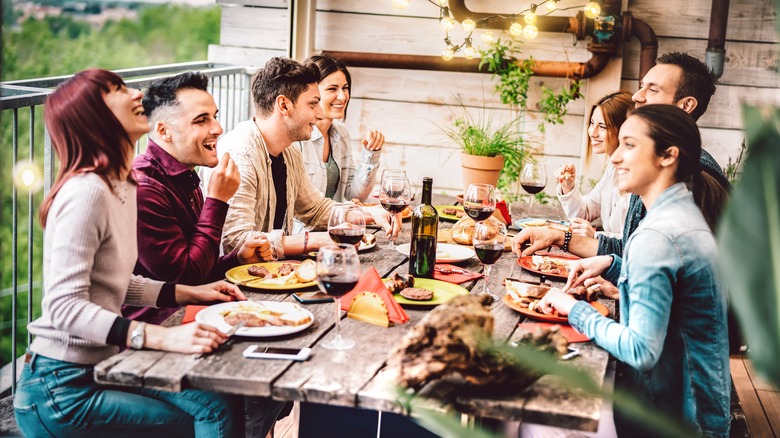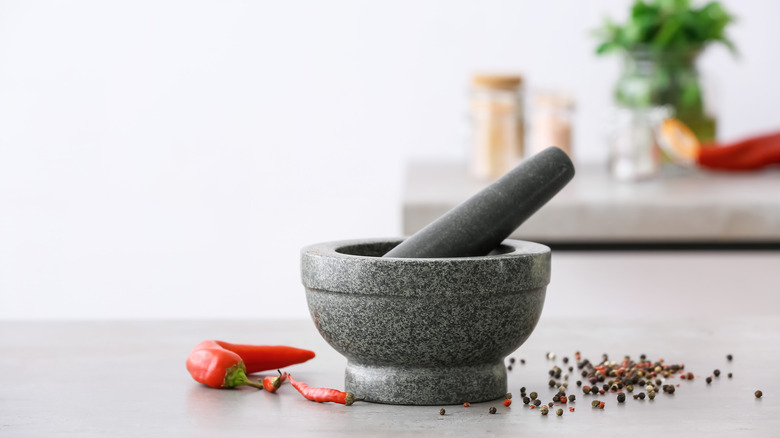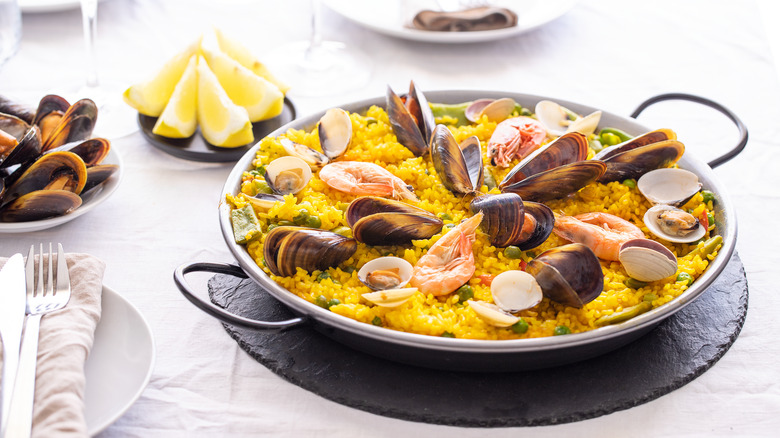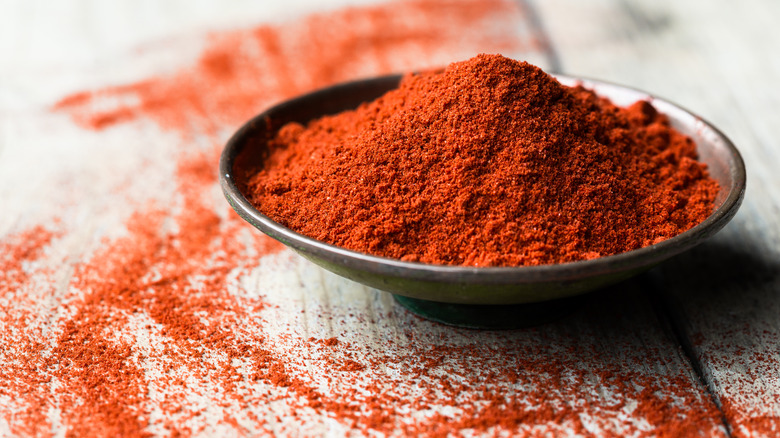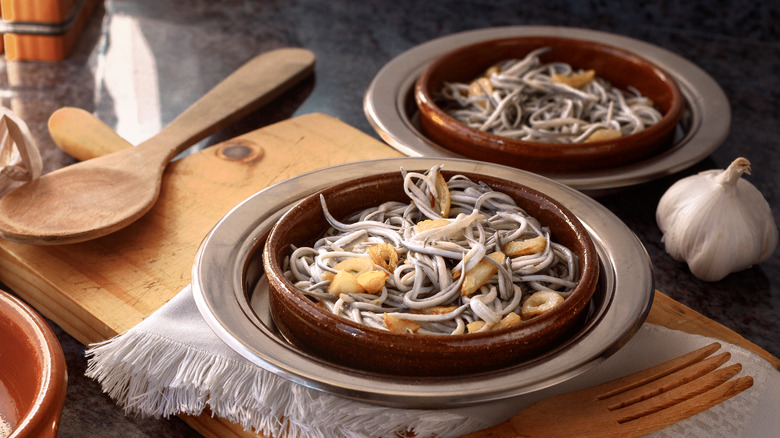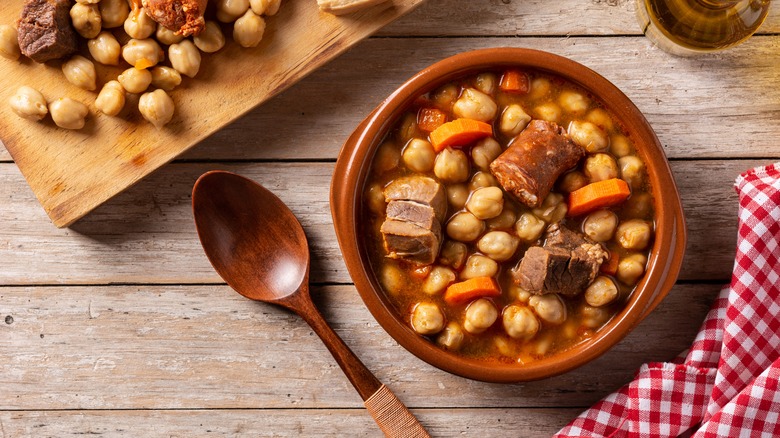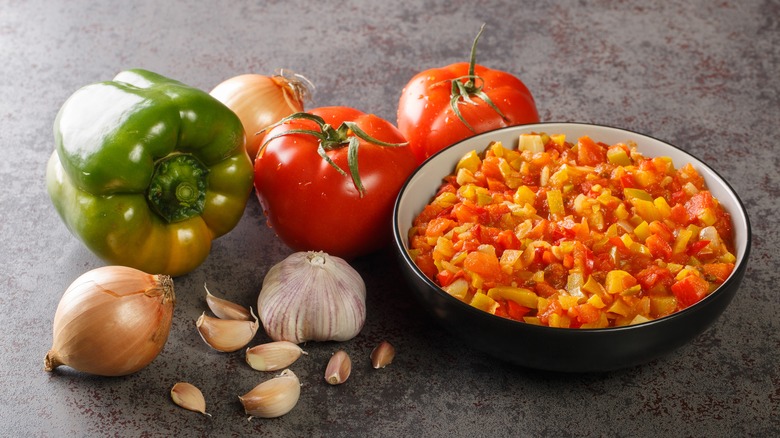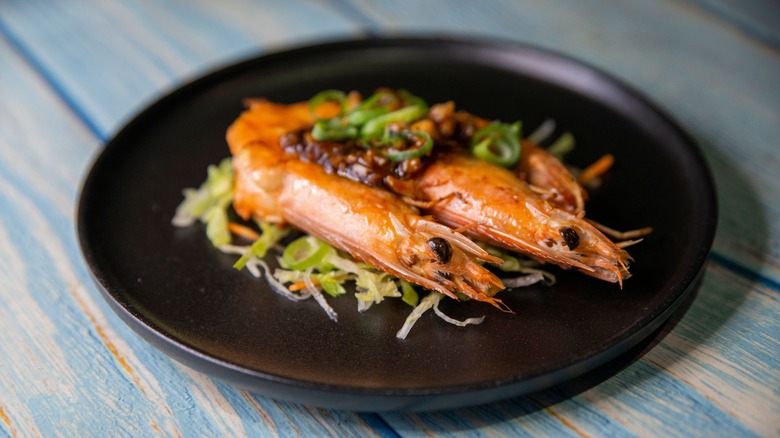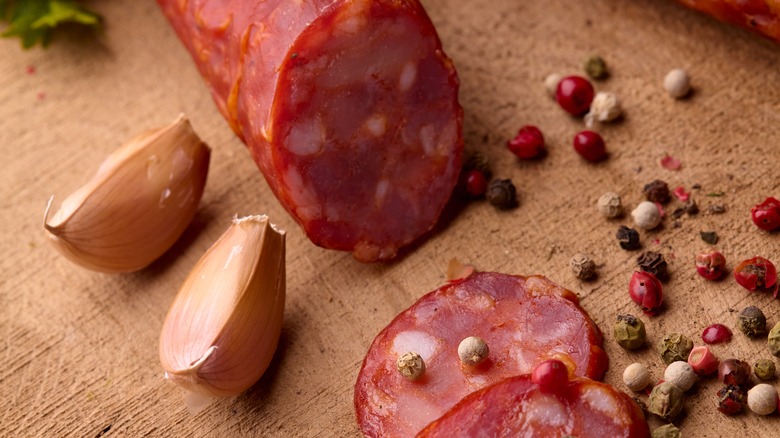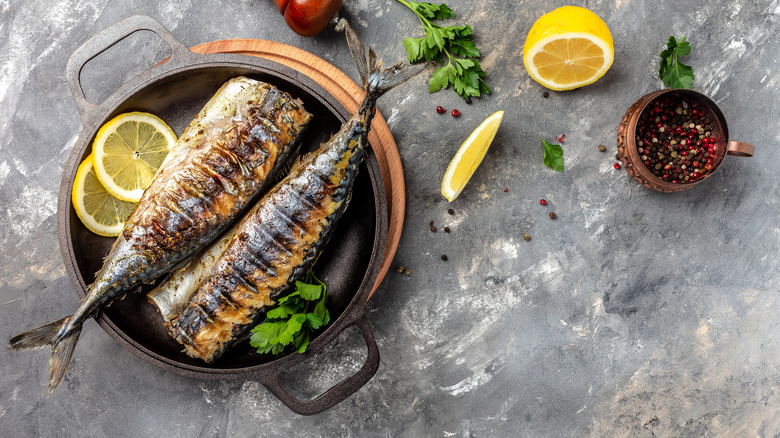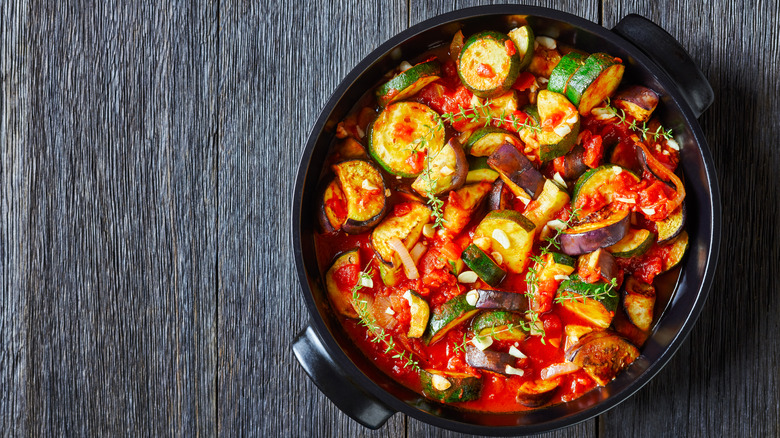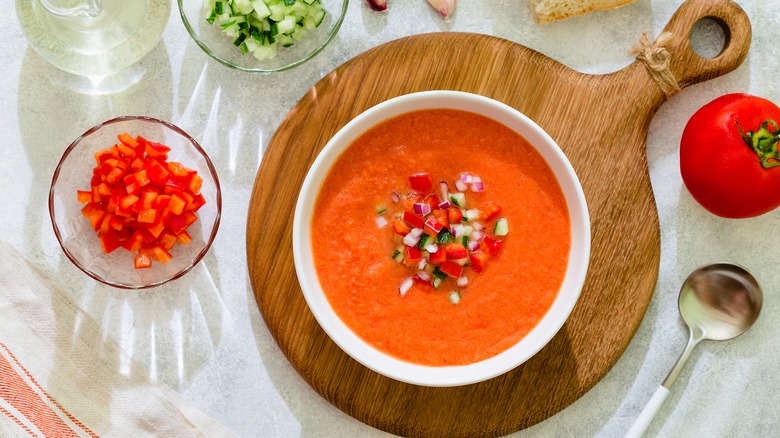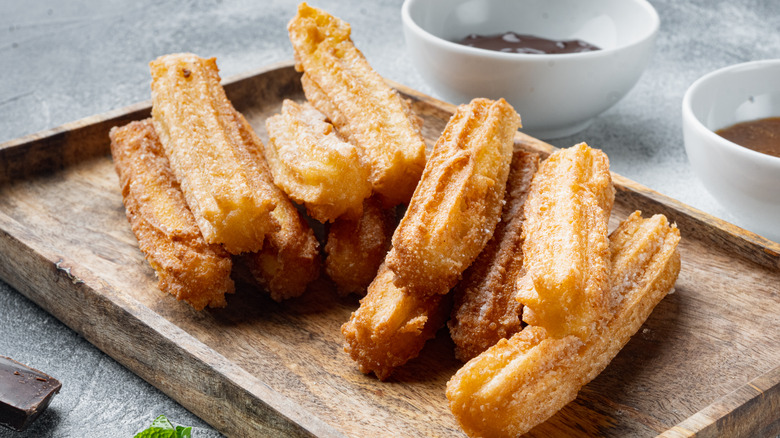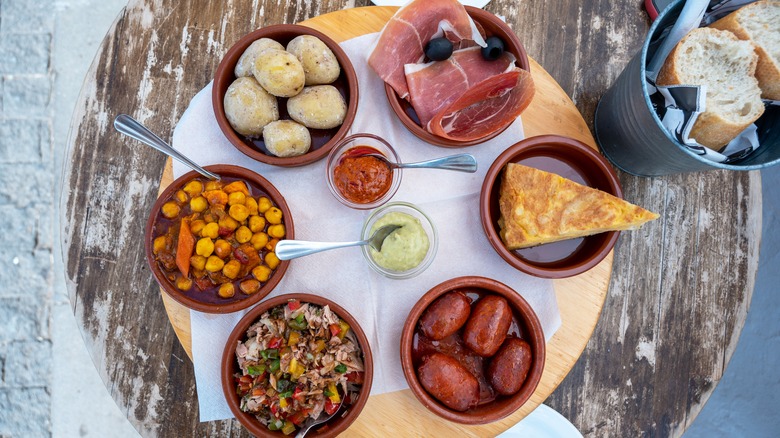14 Tips For Cooking Authentic Spanish Cuisine
In a lot of ways, Spain seems to have it all. The European country has a rich culture, dynamic geography, glorious weather, and miles of coastline. On top of all of that, the country has amazing cuisine.
Spain's food is beloved worldwide for its use of vibrant flavors, achieved through using super-fresh produce and well-chosen spices. It is heavily influenced by the country's climate, geography, and various cultures. From hearty dishes of paella to the refreshing taste of gazpacho to the sweet taste of churros dipped in chocolate, Spanish cuisine is responsible for some iconic and diverse recipes.
But cooking Spanish cuisine takes some expertise. Without the right understanding of Spanish cuisine's ingredients, tools, and techniques, you'll end up with a disappointing meal. That's why we decided to put together our top tips for cooking authentic Spanish food. Grab your tapas dishes and your paella pan, and let's get started.
1. Get acquainted with traditional dining schedules
You might be tempted to think that everyone eats three square meals, at the same time, every day. But in Spain, things are done a little differently. If you're keen on making authentic Spanish food, you'll need to consider how and when you serve it.
Dinner is usually the largest meal of the day in America. But in Spain, lunch is generally when people eat the most. This meal is generally served at around 2 p.m. and comprises several courses. These usually include an appetizer, a main course, and dessert. Lunch is considered a festive affair. There is an emphasis on socializing throughout the meal.
After lunch and before dinner, tapas — a set of small dishes — are enjoyed along with drinks. Dinner in Spain is usually eaten much later than in other countries. This is partially the result of Spain's workdays, which conclude around 8 p.m. Dinner times are also determined by the Spanish sunset, which can occur as late as 10 p.m. Spanish dinners are a traditionally light affair, with the majority of the day's food eaten in the earlier hours.
2. Gather authentic cooking tools
Good cooking starts with good cookware. While you don't necessarily need the fanciest gadgets to make glorious food, you do need a few choice items. To cook authentic Spanish cuisine, it's wise to invest in some key tools.
The first item you should consider purchasing is a food mill. Called a pasapurés in Spanish, this device allows you to blend and purée food in the same way that food processors do. However, a food mill will also more easily separate skins, seeds, or bones while it's breaking down your food. This can be a game-changer when it comes to making Spanish dishes like gazpacho. A pasapurés automatically removes skins and seeds from required ingredients such as tomatoes. A good mortar and pestle is also useful in tackling Spanish cooking. This tool can be used to attempt traditional recipes like sofrito. A mortar and pestle can also be used to grind spices.
For a truly authentic Spanish cooking experience, consider purchasing a cazuela or two. These casserole dishes are usually made to withstand very high temperatures, meaning you can use them to bake things in the oven. They also vary in size and function. A smaller cazuela could be used for preparing tapas dishes, while larger ones are great for making stews.
3. Use the correct pan for paella
When you think of Spanish cuisine, paella probably comes to mind. The famed rice dish is a staple of the Spanish city of Valencia that has become associated with the country's cuisine as a whole. Because of the recipe's rustic feel, paella can seem easy to make. This leads to several common mistakes, one of which is using the wrong pan.
To master paella, you'll need to get a paella pan. This wide, flat, and round dish has a similar shape to a large frying pan. However, a paella pan also comes with one handle on each side. This cookware tool's large surface helps it to evaporate as much liquid as possible while still cooking the rice. This creates rice that is well-cooked and chewy on the inside, but crispy at the edges. When making this rice dish, try to find a short-grain variant called bomba rice. This is the traditional grain used to make paella.
4. Make the most of your spices
Spices are an important part of Spanish cooking, so it's essential to learn which to use and how to use them. Spanish cuisine tends to stick to three primary ones: garlic, saffron, and paprika.
Although it's technically a root vegetable, garlic is often used as a spice. This is the case in many of Spain's most famous recipes. When adding a more subtle hint of garlic, Spanish chefs might use garlic-infused olive oil or rub peeled garlic cloves across the surface of a food. In more garlic-heavy dishes like ajo blanco, which is a type of gazpacho, entire cloves are blended with other ingredients. Like garlic, saffron is a spice popularly used in Spanish cooking to add color and flavor. Very small amounts of it can make a big impact, so make sure to use only a few threads per dish.
The type of paprika often used is called Pimentón de La Vera. It provides the distinctive flavor of chorizo, a type of Spanish pork sausage. Pimentón de la Vera has a depth that you just won't be able to replicate as well with other paprikas. Its use is paramount to making authentic Spanish cuisine.
5. Embrace new and unexpected ingredients
Most foodies are pretty familiar with the classic Spanish dishes. But the country's cuisine is also a treasure trove of unique, lesser-known meals. One of these must-try dishes is the expensive Spanish delicacy of angulas. Originating from the Basque region, a plate of angulas might look pretty similar to gray spaghetti noodles. But when you take a closer look, you'll realize that a plate of angulas consists of several baby eels.
The eels are pretty neutral-tasting themselves. To give the dish flavor, bold ingredients like garlic and hot peppers are fried in a generous amount of olive oil before adding the seafood component. The result is a protein-rich, somewhat crunchy dish. However, those seeking to try making angulas will not only need to pluck up their courage. They will also need to spend a pretty penny. This Spanish recipe is expensive to make, due to the high cost of these eels. They can cost as much as $500 per pound.
6. Master the art of the stew
Stew, called estofado in Spain, is an essential component of the country's cuisine. There are many different Spanish stew recipes, many of which are associated with certain regions. These recipes are driven by the local and seasonal availabilities of an area.
The regions of Leon or Castile are known for Barco beans, which means these legumes could make an appearance in local stews. Elsewhere, meats like rabbit and veal are popular, so they could find their way into a stew recipe, as well. Then, there is a stew called menestra. The dish consists of several vegetables, such as mushrooms, artichokes, chard, and green beans. It is sometimes associated with the Spanish region of La Rioja. However you make your Spanish stew, make sure that you serve it with some bread. This will make the meal even more filling and comforting for you and your guests.
7. Learn to make a proper sofrito
A lot of cuisines across the globe have mini recipes that are used to add a base of flavor to their dishes. These recipes are usually formed from only a few ingredients or seasonings. In French cooking, there is the mirepoix. This combination of sautéed onion, carrots, and celery helps to begin things with a bang. In Spanish cooking, there is sofrito. This dish can be a starting point for larger meals or used as a filling for foods like empanadas.
Most often, a sofrito recipe uses easy-to-obtain ingredients, such as tomatoes, bell peppers, onions, garlic, and herbs. You'll want to use tools like a mortar and pestle, food processor, blender, or food mill to grind these ingredients into a slightly chunky paste. Once this salsa-like component is created, it can then be sautéed and used as the jumping-off point for a range of Spanish recipes. Sofritos are great blends to make ahead of time, as they can be stored for around five days in the refrigerator.
8. Explore the a la plancha food preparation technique
Many cuisines have a particular cooking technique that involves applying high, direct heat to food. With Spanish food, getting the a la plancha cooking technique right is sometimes the difference between an authentic meal and a disaster.
A la plancha is a specific style of food preparation that combines quick searing with smoking. This helps to create a unique depth of flavor. A la plancha cooking is commonly used for meat and seafood dishes. One of the most famous is gambas a la plancha, a popular tapas dish consisting of cooked prawns.
In Spanish, the plancha is a mostly flat surface used for cooking. It is usually heated to over 600 degrees Fahrenheit, making it extremely hot. Sometimes, planchas are curved at the center, allowing grease to fall away from your dish during the cooking process. This central bump is often the hottest part of the plancha.
9. Know the different types of chorizo and their uses
There are many different types of sausage in the world. In Spain, chorizo is probably the most well-known. It consists of cured pork sausage that is seasoned with the iconic flavors of paprika (or the Spanish paprika known as Pimentón de la Vera), salt, and garlic. Chorizo is a taste sensation in its own right, but it also comes alive when added to Spanish dishes. It gives everything it touches a hearty, rich flavor.
However, not all chorizo sausages are the same. These different varieties should be used in different recipes. Chorizo styles such as Ibérico are best enjoyed alone, due to their high-end ingredients. On the other hand, the variety of chorizo known as Ristra isn't safe to eat this way. These partially cured sausages must be cooked before eating. One of the most versatile types of chorizo is Sarta. It can be enjoyed on its own or used in recipes. Whichever chorizo you go for, make sure it's the best quality you can afford.
10. Learn how to cook staple proteins like fish
As in other Mediterranean cultures, fish is central to Spanish cuisine. With a coast of around 5,000 miles — including around 1,000 miles of Mediterranean coastline — it's easy to see why seafood plays such a big role in the food culture. Sole, sardines, hake, octopus, prawns, and anchovies are all routinely enjoyed in Spain.
However, it can be hard to get the hang of cooking fish. It can be especially difficult to grill larger types of seafood. This is because fish flesh is likely to fall apart when it gets caught on hot surfaces.
That's why you should follow Spanish restaurateur and chef José Andrés' top tip when cooking your Spanish fish recipes. Andrés recommends ensuring that your grill is heated to a super-high temperature before placing your fish on it. According to the chef, this heat will give your fish the browning it needs, without allowing it to adhere to the metal surface. Once your fish has received an adequate sear, it should come away from the grill surface easily.
11. Use high-quality ingredients for dishes like pisto
Pisto is a stewed vegetable dish that looks a bit similar to ratatouille. The dish comes from the region of Murcia but is enjoyed by Spaniards nationwide. Pisto usually involves ingredients like garlic, bell peppers, eggplant, zucchini, and onions. The recipe is incredibly versatile and could be enjoyed at different times of the day. It is sometimes consumed with eggs for breakfast.
While the simple nature of pisto means that virtually anyone can rustle it up, a key thing to remember is it's only as good as the ingredients you use. Opting for fresh, seasonal vegetables will invariably produce a more flavorful result. Using better-quality olive oil is also helpful. As olive oil is such a large factor in the dish's richness, using a high-end one could work wonders. We recommend splurging for a nicer olive oil when making Spanish recipes like pisto.
12. Don't rush your gazpacho
Have you always enjoyed your soup warm? If so, it's time to mix it up and try some gazpacho. This Spanish dish consists of tomatoes, onions, and seasonings which are blended into liquid and served cold. Unlike other soups, gazpacho ingredients are typically uncooked, which allows its fresh flavors to shine.
But if you think gazpacho is just throwing everything in a blender, you would be mistaken. An essential step in making gazpacho is letting it rest. If you pour your gazpacho straight from the blender into the bowl, the flavors will remain undeveloped. Giving it time to sit in the fridge allows it to cool while letting ingredients mingle. You also need to use fresh ingredients, especially ripe tomatoes. While it can be tempting to make gazpacho when tomatoes are out of season, making it when they're at their peak produces a better result.
13. Acquire some churro-making skills
Spanish cuisine is known for savory dishes, it also excels when it comes to sweet treats. If you've not yet tried Spanish churros, you should. These deep-fried, sugar-coated sticks make a great dessert. However, they are also eaten as a breakfast treat, served with melted dipping chocolate.
To make proper churros, you need to get your technique down. The first thing you'll need to do is ensure you have a large, ridged piping bag. Using a bag with the correct nozzle width ensures that your ridges are substantial enough to cling to other churro ingredients. You also need to get your oil temperature just right. Make sure that your oil is heated to 400 degrees Fahrenheit. If your oil isn't warm enough, your churros won't cook through enough. Make your oil too hot, however, and they'll burn on the outside before cooking through to the center.
14. Try making famous tapas dishes, like patatas bravas
Few styles of food service are as iconic as tapas. The word "tapa" means lid. People think the culinary term came from bartenders using small pieces of food to cover the top of customers' drinks, thereby preventing bugs from entering them. But, according to the story, customers started eating these little bites of food. Thus, the tradition of tapas was born.
There are many popular tapas dishes. Some famous ones include croquetas, pimientos de Padrón, and Spanish tortillas. Patatas bravas, a dish of fried potatoes served with sauce, is another tapas staple. While patatas bravas are traditionally pan-fried, you can also make this crispy Spanish potato dish using an air fryer.
To make, start by slicing up some potatoes. Throw them into your air fryer with a bit of oil. Leave them to cook until they're crispy on the outside but soft in the middle. This technique for cooking patatas bravas reduces fat content and stops your potatoes from becoming mushy. Plate them up on a tapas dish, add your sauce of choice (traditionally aioli or spicy salsa brava), and enjoy.

